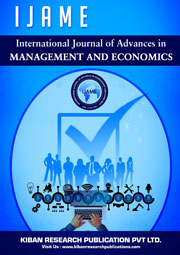FINANCIAL RESILIENCE IN THE BRICS COUNTRIES: EMPIRICAL EVIDENCE FROM THE GLOBAL FINDEX SURVEY 2021
Abstract
Economic disruption has made financial resilience a key priority for policymakers worldwide. BRICS, comprising a group of emerging countries, holds an important place in the global space, navigating numerous financial challenges. This research seeks to explore the financial resilience levels and determinants in the BRICS countries using the Global Findex Survey 2021. The study found that the majority of the individuals cited an inability to come up with an emergency fund, indicating a low level of financial resilience in the BRICS countries. We observed that China faced the least difficulty raising an emergency fund, while India had the largest share of individuals facing high difficulty raising an emergency fund. Most of the respondents in the BRICS countries relied on working and family, and friends to raise the funds. Furthermore, the study exhibited that Russia and India showed more reliance on family and friends, while China had the highest number of individuals raising an emergency fund from their savings. Both South Africa and India also have the highest number of respondents indicating an inability to raise an emergency fund. Additionally, the regression analysis showed that gender, education, income, urbanicity, mobile money account, saving, and borrowing are key determinants of financial resilience in the BRICS countries.
Keywords: Financial inclusion, Financial resilience, BRICS, Global Findex.
JEL Classification: G51, G53, D14

